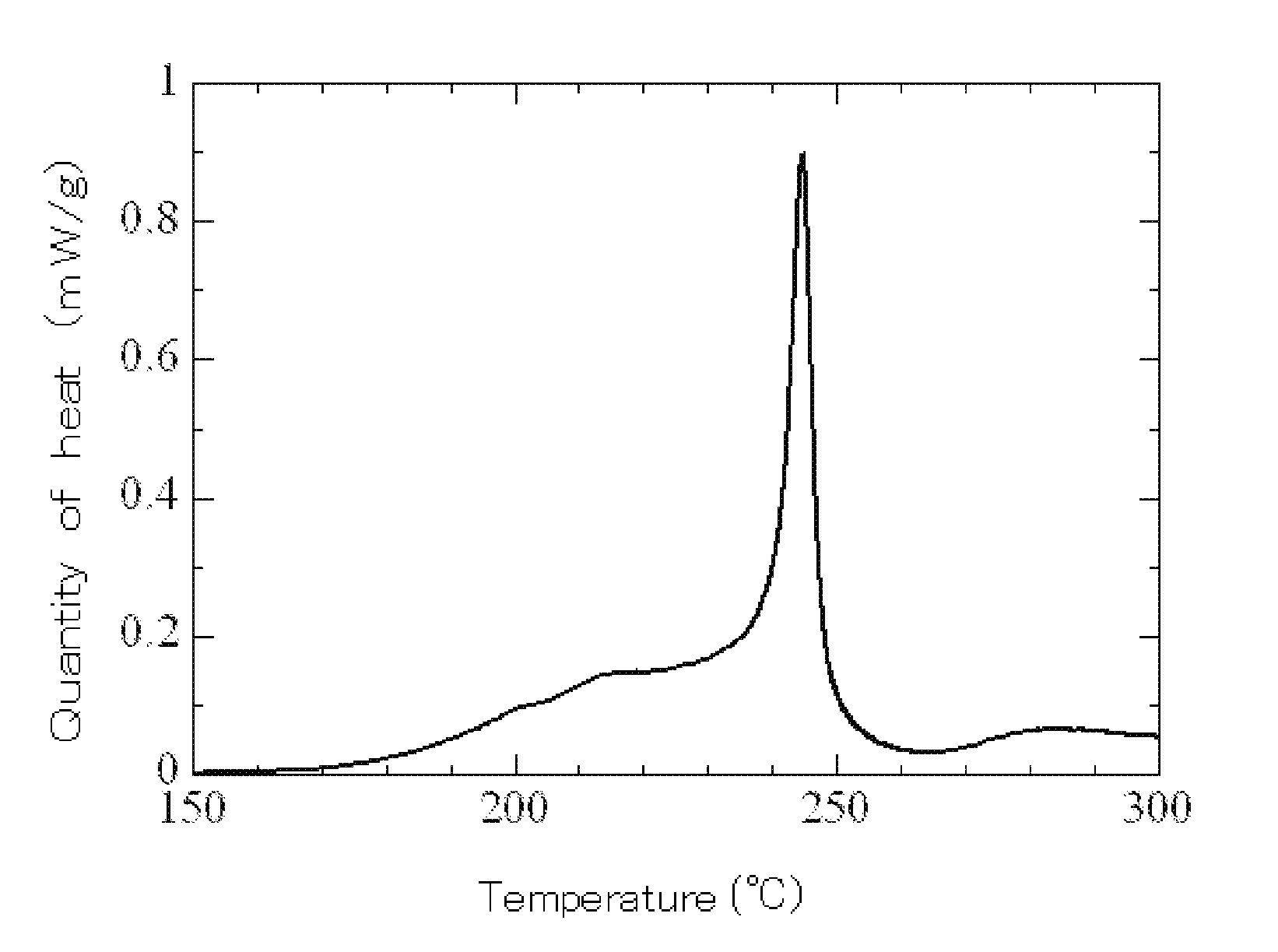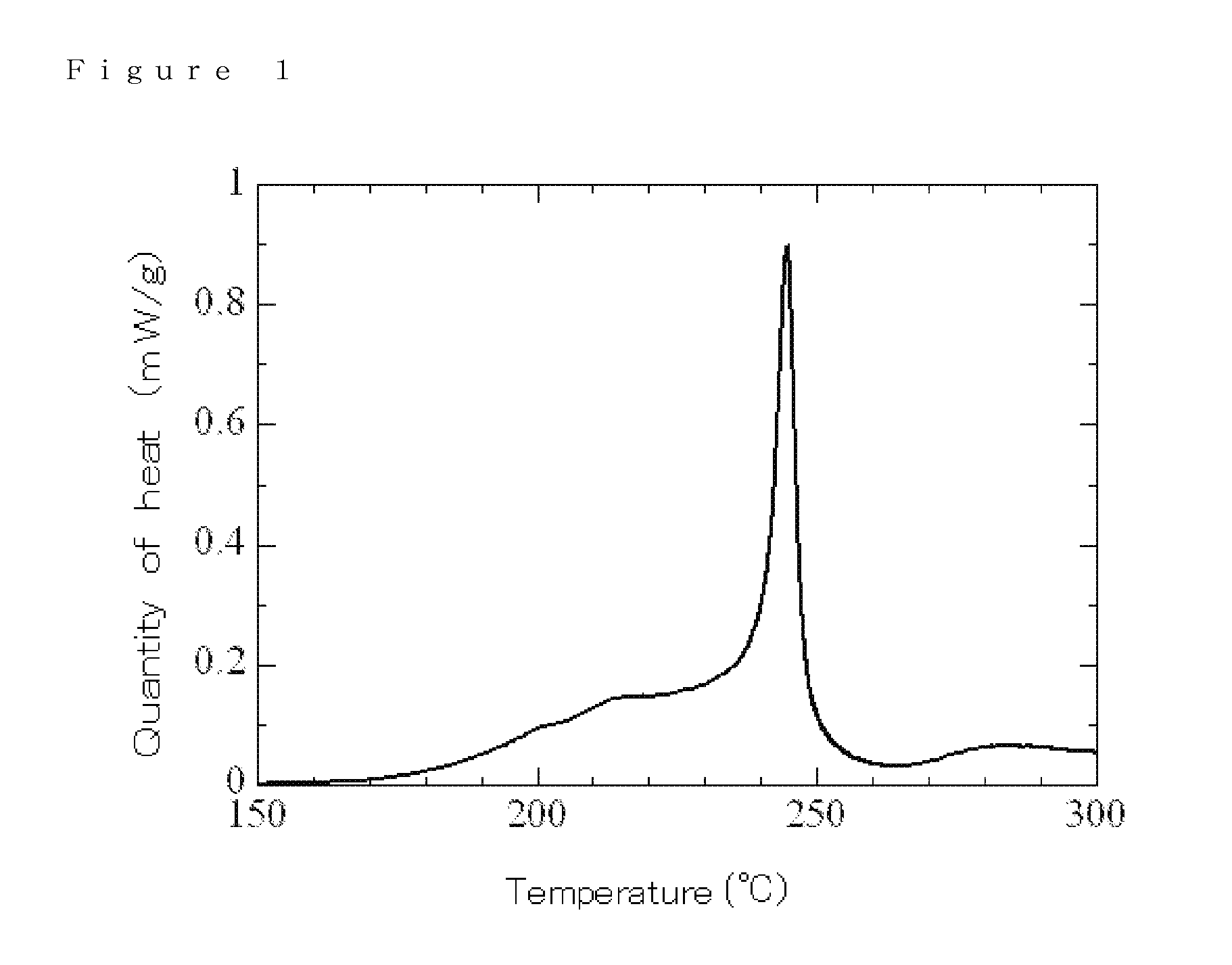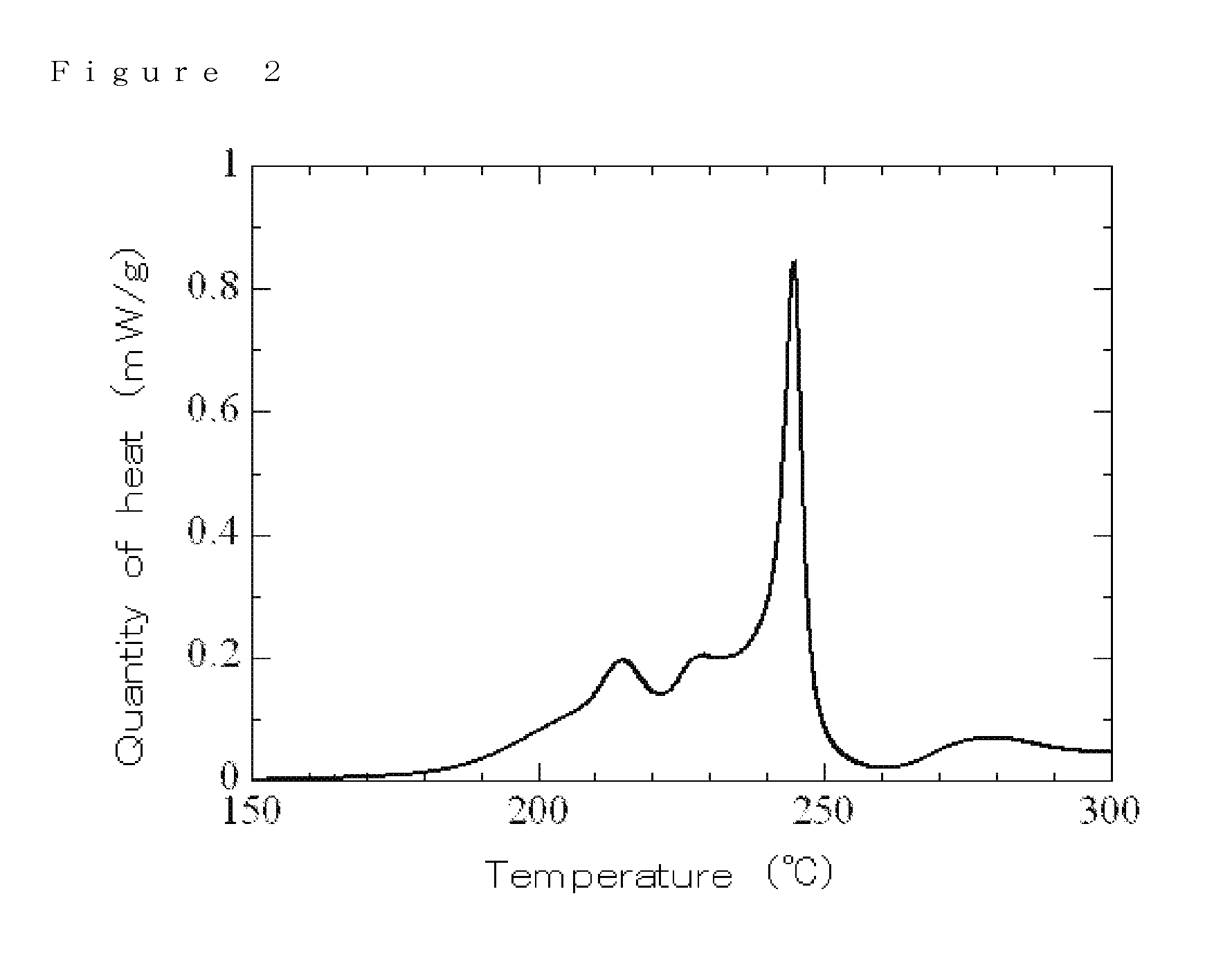Electrolyte, electrolyte solution for lithium-ion secondary battery comprising the electrolyte, and lithium-ion secondary battery using the electrolyte solution
a lithium-ion secondary battery and electrolyte solution technology, which is applied in the direction of electrolytic capacitors, non-aqueous electrolyte cells, electrochemical generators, etc., can solve the problems of reducing the initial discharge capacity, reducing the discharge capacity and cycle characteristics, and not obtaining sufficient battery capacity, etc., to improve the cycle characteristics and safety of lithium-ion secondary batteries.
- Summary
- Abstract
- Description
- Claims
- Application Information
AI Technical Summary
Benefits of technology
Problems solved by technology
Method used
Image
Examples
synthesis example 1
Synthesis of triethylmethylphosphonium bis(trifluoromethylsulfonyl)imide (Hereinafter Referred to as “TEMP-TFSI”)
[0073]To 236 g (0.5 mol) of a commercially available 25% solution of triethylphosphine (product name: HISHICOLIN (registered trademark) P-2, manufactured by Nippon Chemical Industrial Co., Ltd.) in toluene, 71 g (0.5 mol) of iodomethane (reagent, manufactured by Tokyo Chemical Industry Co., Ltd.) was added dropwise under a nitrogen atmosphere, and the mixture was reacted at 30 to 40° C. for 5 hours with stirring. After the reaction was completed, 100 ml of hexane was added to the reaction mixture to precipitate crystals. The resulting crystals were filtered and vacuum dried under a degree of vacuum of 0.5 kPa at 80° C. for 3 hours to obtain triethylmethylphosphonium iodide. Thereby, 116 g of triethylmethylphosphonium iodide was obtained (yield 89%). To 78 g (0.3 mol) of the resulting triethylmethylphosphonium iodide, 78 g of pure water was added to form a 50% aqueous solu...
synthesis example 2
Synthesis of tri-n-butylmethylphosphonium bis(trifluoromethylsulfonyl)imide (Hereinafter Referred to as “TBMP-TFSI”)
[0074]To 104 g (0.3 mol) of a commercially available tri-n-butylmethylphosphonium iodide (product name: HISHICOLIN (registered trademark) PX-4MI, manufactured by Nippon Chemical Industrial Co., Ltd.), was added 104 g of pure water. To the mixture with stirring, was added 86 g (0.3 mol) of lithium bis(trifluoromethylsulfonyl)imide (reagent, manufactured by Kanto Chemical Co., Inc.) to allow them to react with each other, followed by stirring for 2 hours at room temperature to complete the reaction. After the completion of the stirring, the lower layer side (product) was separated from the mixture in the form of an upper and lower two-layer structure, washed four times with pure water, and then washed four times with n-hexane. After the completion of the washing, the product was vacuum dried under a degree of vacuum of 0.5 kPa at 80° C. for 3 hours. The structure of the ...
synthesis example 3
Synthesis of tri-n-hexylmethylphosphonium bis(trifluoromethylsulfonyl)imide (Hereinafter Referred to as “THMP-TFSI”)
[0075]To 143 g (0.5 mol) of a commercially available tri-n-hexylphosphine (reagent, manufactured by Tokyo Chemical Industry Co., Ltd.), 71 g (0.5 mol) of iodomethane (reagent, manufactured by Tokyo Chemical Industry Co., Ltd.) was added dropwise under a nitrogen atmosphere, and the mixture was reacted at 30 to 40° C. for 5 hours. After the reaction was completed, 100 ml of hexane was added to the reaction mixture to separate layers. The resulting liquid was then washed three times with hexane and vacuum dried under a degree of vacuum of 0.5 kPa at 80° C. for 3 hours to obtain 182 g (yield 85%) of tri-n-hexylmethylphosphonium iodide. To 129 g (0.3 mol) of the resulting tri-n-hexylmethylphosphonium iodide, was added 129 g of pure water. To the mixture with stirring, was added 86 g (0.3 mol) of lithium bis(trifluoromethylsulfonyl)imide (reagent, manufactured by Kanto Chem...
PUM
| Property | Measurement | Unit |
|---|---|---|
| melting point | aaaaa | aaaaa |
| volume | aaaaa | aaaaa |
| solubility | aaaaa | aaaaa |
Abstract
Description
Claims
Application Information
 Login to View More
Login to View More - R&D
- Intellectual Property
- Life Sciences
- Materials
- Tech Scout
- Unparalleled Data Quality
- Higher Quality Content
- 60% Fewer Hallucinations
Browse by: Latest US Patents, China's latest patents, Technical Efficacy Thesaurus, Application Domain, Technology Topic, Popular Technical Reports.
© 2025 PatSnap. All rights reserved.Legal|Privacy policy|Modern Slavery Act Transparency Statement|Sitemap|About US| Contact US: help@patsnap.com



